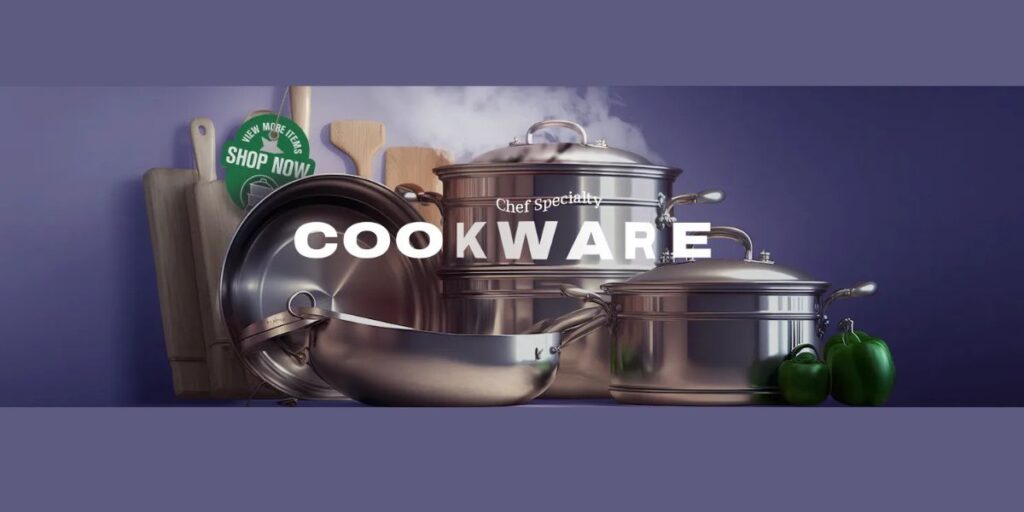In the culinary world, success hinges not only on great food and exceptional service but also on having the right tools and resources. This is where restaurant supply and restaurant equipment supply play pivotal roles. Whether you’re launching a new restaurant, upgrading your existing kitchen, or ensuring smooth operations, understanding these essential components can make or break your business.
This guide dives into everything you need to know about restaurant supplies and equipment, offering insights, tips, and recommendations to optimize your restaurant operations.
What is Restaurant Supply?
Restaurant supply refers to the consumable goods and products necessary for day-to-day operations in a food establishment. These include items like:
- Disposable items: Napkins, straws, cups, takeout containers.
- Cleaning supplies: Sanitizers, dishwashing liquid, mops, and brooms.
- Small wares: Utensils, cutting boards, and mixing bowls.
These supplies are essential for maintaining hygiene, delivering excellent customer experiences, and ensuring that the kitchen runs smoothly.
What is Restaurant Equipment Supply?
Restaurant equipment supply, on the other hand, refers to the large-scale appliances, tools, and machinery used in commercial kitchens. This category encompasses:
- Cooking equipment: Ovens, grills, fryers, and stovetops.
- Refrigeration units: Walk-in freezers, refrigerators, and display cases.
- Preparation equipment: Food processors, mixers, and slicers.
- Serving equipment: Buffets, beverage dispensers, and display trays.
Investing in high-quality restaurant equipment can significantly enhance efficiency, reduce energy costs, and improve the overall quality of food and service.
The Importance of Restaurant Supply and Equipment Supply
Running a successful restaurant requires more than just great recipes. Here’s why focusing on restaurant supply and equipment is critical:
1. Operational Efficiency
Having the right tools and supplies ensures that your staff can work efficiently without delays. For example, a high-capacity dishwasher can clean more dishes in less time, speeding up table turnover.
2. Cost-Effectiveness
Investing in durable and energy-efficient equipment saves money in the long run by reducing maintenance costs and energy bills.
3. Compliance with Health and Safety Standards
Proper restaurant supplies, such as gloves and food-grade containers, help you meet health regulations. High-quality equipment ensures food is cooked and stored at safe temperatures.
4. Customer Satisfaction
Presentation matters. The right serving supplies and utensils can elevate the dining experience, leaving a lasting impression on customers.
Types of Restaurant Supply
1. Kitchen Supplies
These include items essential for food preparation and cooking, such as:
- Knives and cutting boards.
- Mixing bowls and measuring cups.
- Pots, pans, and baking sheets.
2. Cleaning Supplies
Maintaining a clean and sanitary kitchen is non-negotiable in the restaurant industry. Common cleaning supplies include:
- Degreasers and floor cleaners.
- Dishwashing detergents.
- Microfiber cloths and sponges.
3. Tableware
Enhance the dining experience with high-quality tableware:
- Plates, bowls, and glasses.
- Flatware such as forks, knives, and spoons.
- Table linens and napkins.
4. Takeout Supplies
With the rise of food delivery services, takeout supplies are indispensable:
- Eco-friendly containers.
- Insulated delivery bags.
- Branding opportunities with custom packaging.
Types of Restaurant Equipment Supply
1. Cooking Equipment
Efficient cooking appliances are the backbone of any restaurant kitchen:
- Grills and Ovens: Ideal for a variety of cuisines.
- Fryers: Essential for fast food and fried dishes.
- Steamers and Combi Ovens: Useful for steaming and baking.
2. Refrigeration
Proper refrigeration is critical to maintaining food safety:
- Walk-in Coolers: Perfect for storing bulk inventory.
- Reach-in Refrigerators: Accessible for daily operations.
- Display Cases: Ideal for showcasing desserts and beverages.
3. Food Preparation Equipment
Automation and precision in food prep save time and improve consistency:
- Mixers: Dough and batter preparation.
- Food Processors: Chopping, slicing, and blending.
- Meat Slicers: Ensures uniform cuts.
4. Beverage Equipment
Specialized equipment for beverages boosts revenue:
- Coffee machines for espresso and cappuccinos.
- Blenders for smoothies and frozen drinks.
- Draft beer systems for bars.
Factors to Consider When Choosing Restaurant Supplies
1. Quality
Invest in high-quality supplies that can withstand the rigors of a busy kitchen. Look for items made of durable materials like stainless steel.
2. Cost
While it’s tempting to opt for cheaper options, remember that low-quality supplies may require frequent replacements, costing you more in the long term.
3. Compatibility
Ensure that your supplies and equipment are compatible with your kitchen setup and menu requirements.
4. Sustainability
Opt for eco-friendly supplies to reduce your environmental impact and appeal to environmentally conscious customers.
Factors to Consider When Choosing Restaurant Equipment
1. Energy Efficiency
Energy-efficient equipment reduces utility bills and is better for the environment. Look for ENERGY STAR-certified appliances.
2. Size and Capacity
Choose equipment that fits your kitchen space and meets your restaurant’s needs. For example, a small café may not need a large walk-in freezer.
3. Maintenance Requirements
Select equipment that’s easy to clean and maintain to reduce downtime and repair costs.
4. Warranty and Support
Invest in equipment from reputable suppliers that offer warranties and reliable customer support.
Best Practices for Managing Restaurant Supply and Equipment
1. Conduct Regular Inventory Checks
Regularly monitor your inventory to avoid shortages or overstocking. Use inventory management software for better accuracy.
2. Train Staff
Ensure your staff is trained to use and maintain equipment properly to prolong its lifespan.
3. Plan for Repairs and Replacements
Budget for equipment repairs and eventual replacements to avoid disruptions.
4. Build Relationships with Reliable Suppliers
Partner with trusted restaurant supply companies to ensure consistent quality and timely deliveries.
Top Suppliers for Restaurant Supply and Equipment Supply
1. WebstaurantStore
A leading online supplier offering a wide range of products at competitive prices.
2. Restaurant Depot
Caters to both small and large food establishments with an extensive inventory.
3. US Foods
Known for high-quality supplies and equipment, along with food products.
4. KaTom Restaurant Supply
Offers everything from cookware to commercial appliances with excellent customer service.
Trends in Restaurant Supply and Equipment
1. Smart Kitchens
Advanced technology is making its way into restaurant equipment, with smart ovens, refrigerators, and cooking systems that can be controlled remotely.
2. Sustainability
Eco-friendly supplies and energy-efficient equipment are gaining traction as restaurants strive to reduce their carbon footprint.
3. Customization
Suppliers are offering more options for customized supplies and equipment to meet the unique needs of different restaurants.
Final Thoughts
Investing in the right restaurant supply and restaurant equipment supply is a cornerstone of running a successful food establishment. From ensuring operational efficiency to delivering exceptional customer experiences, these elements cannot be overlooked.
By focusing on quality, sustainability, and efficiency, you can create a well-equipped kitchen that supports your culinary vision while staying ahead of industry trends. Choose reliable suppliers, maintain your equipment diligently, and adapt to changing demands to keep your restaurant thriving for years to come.







